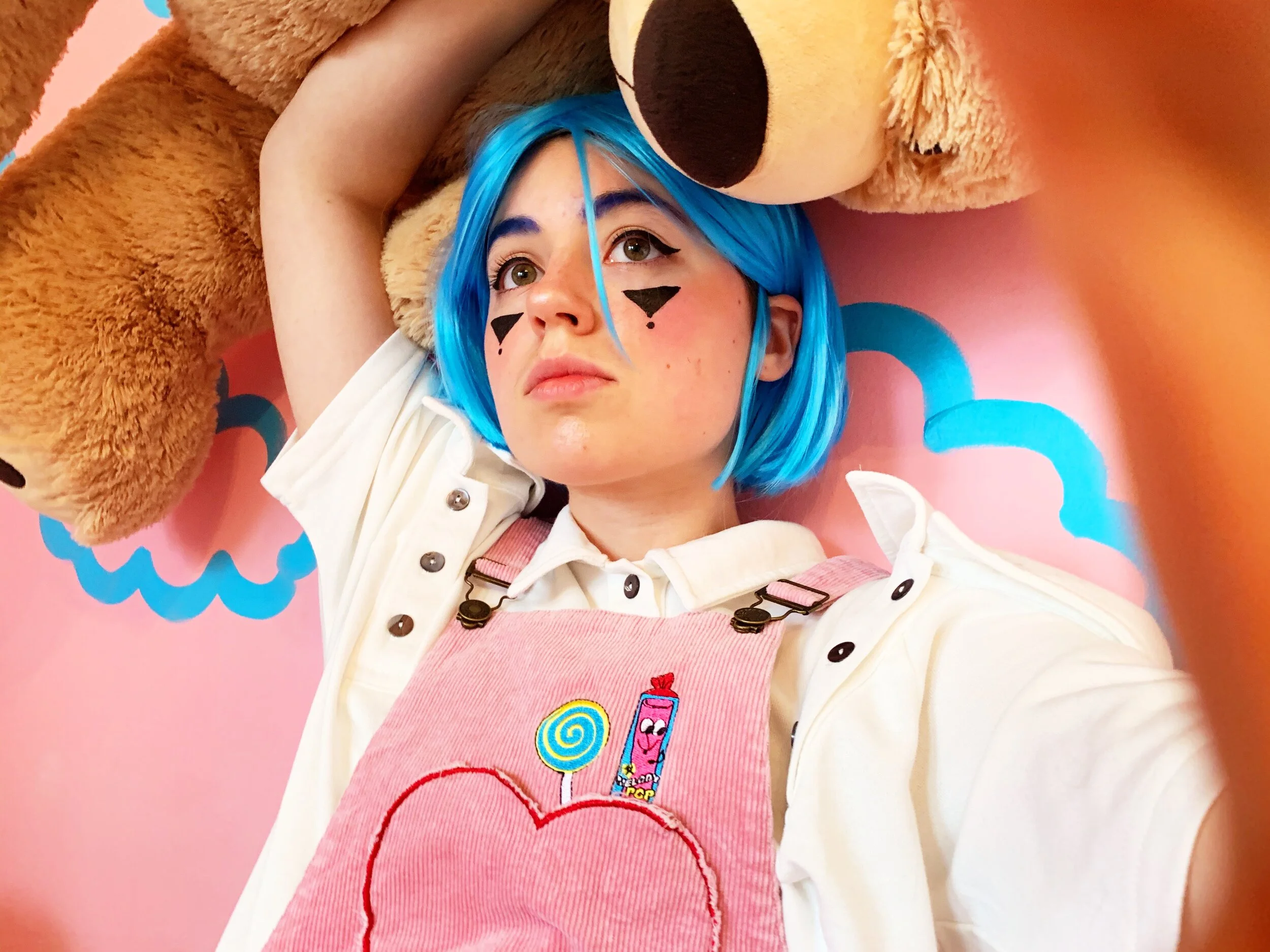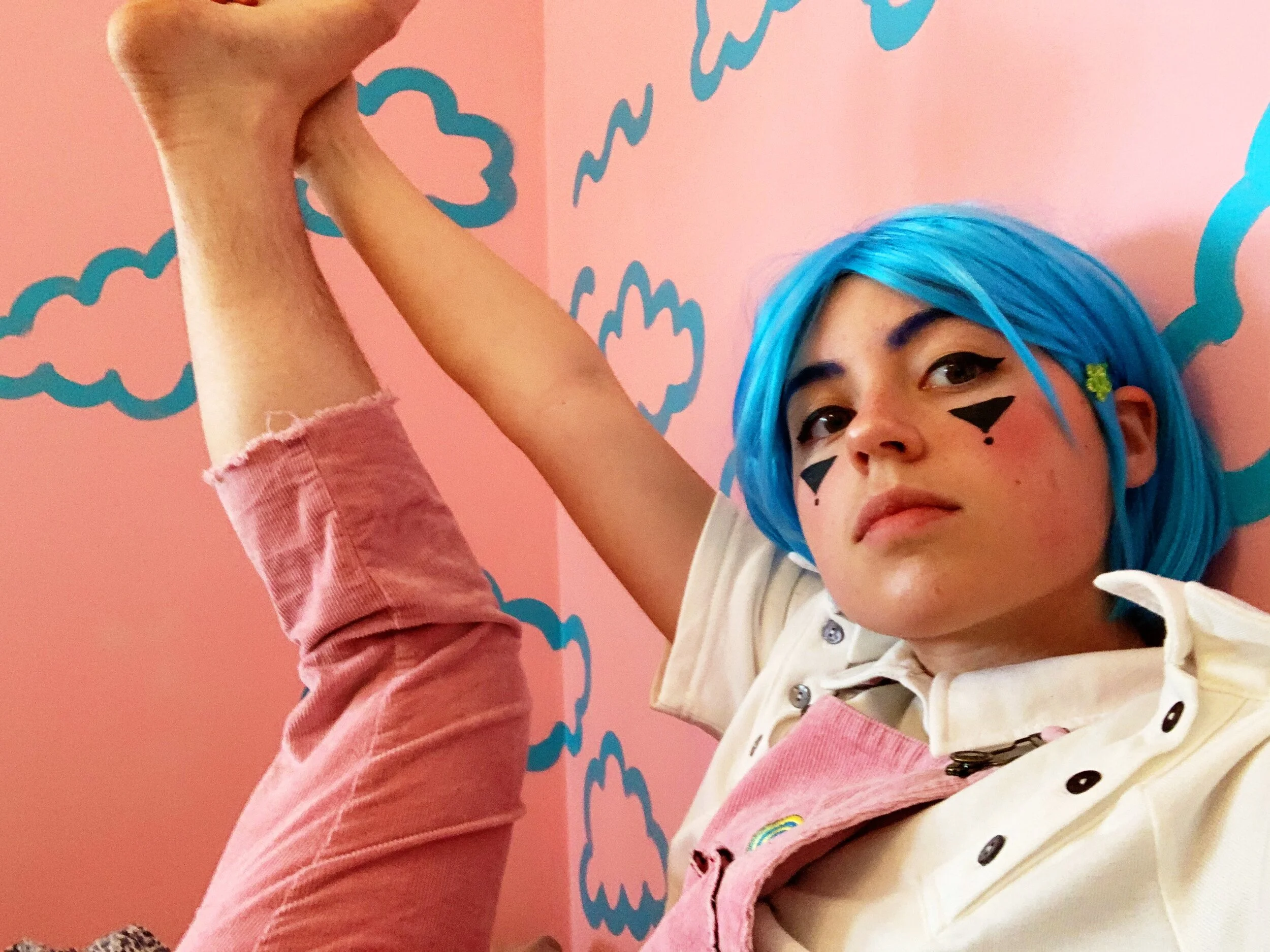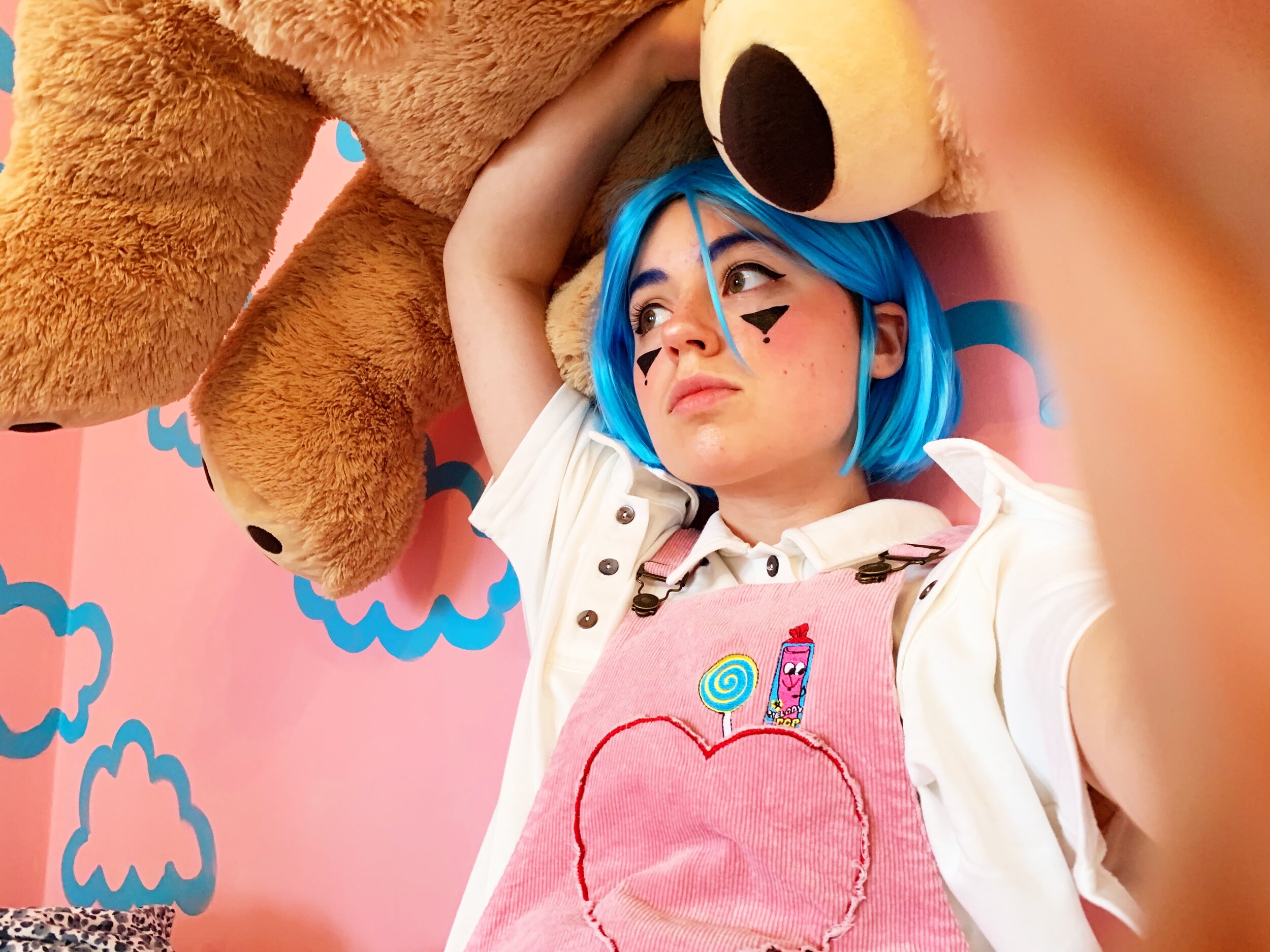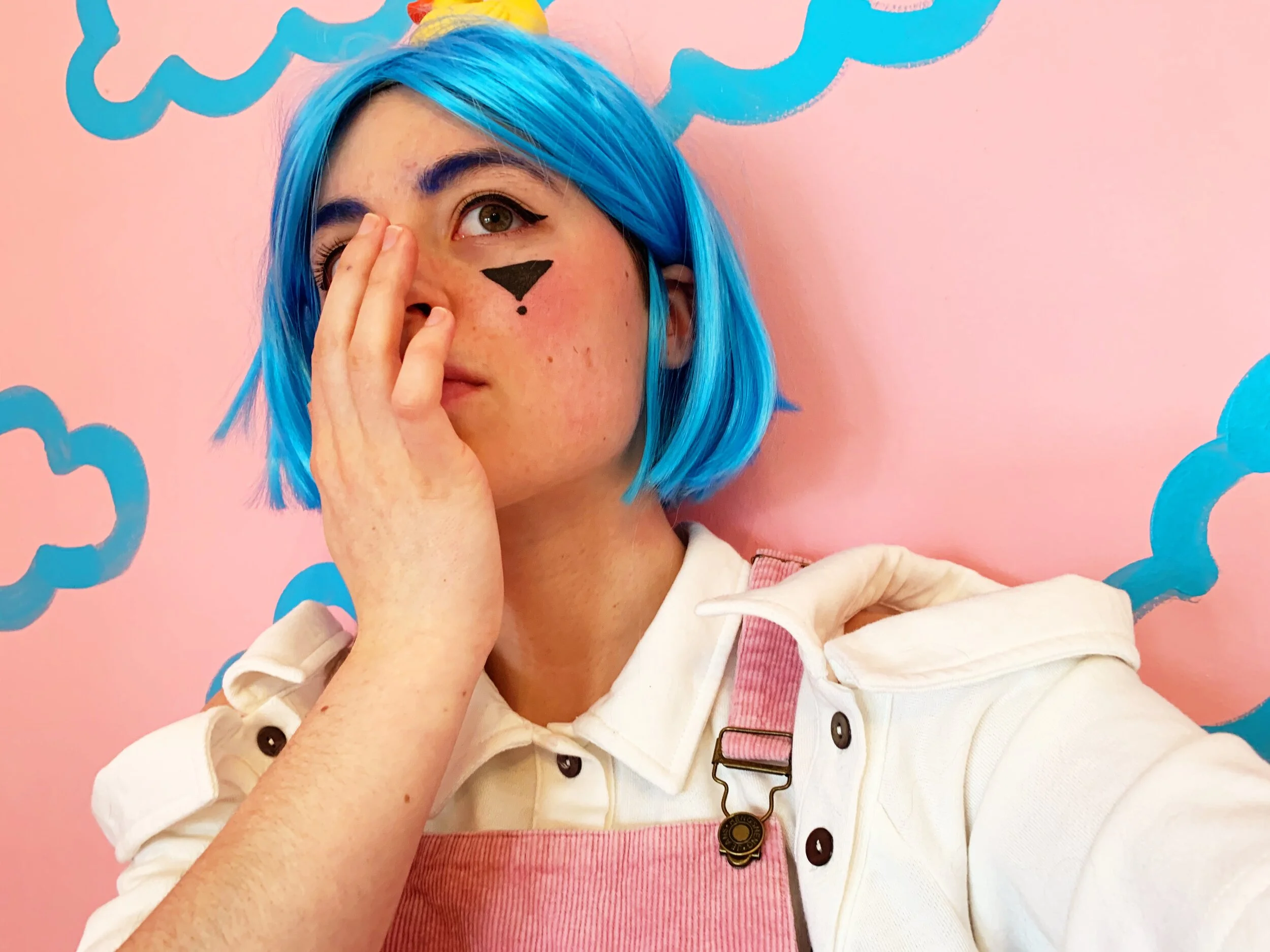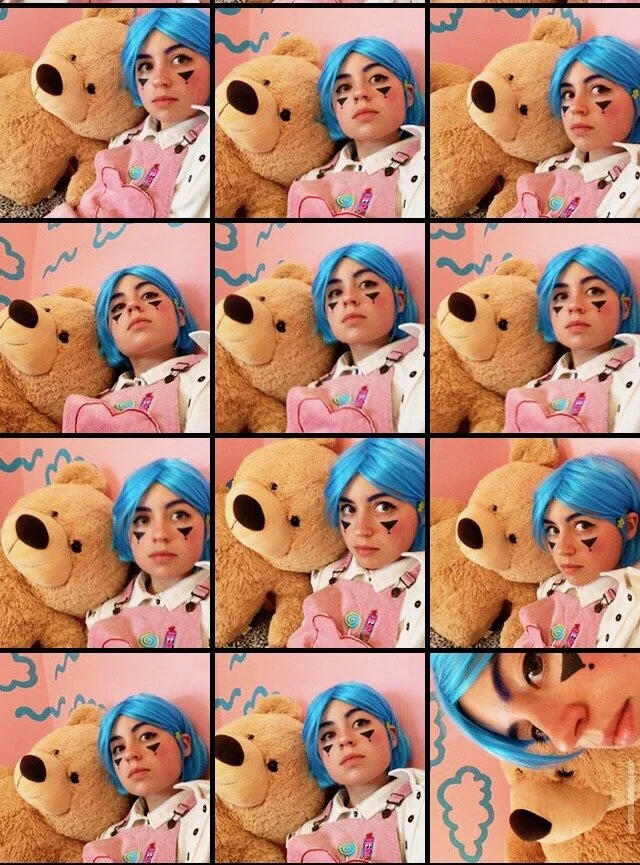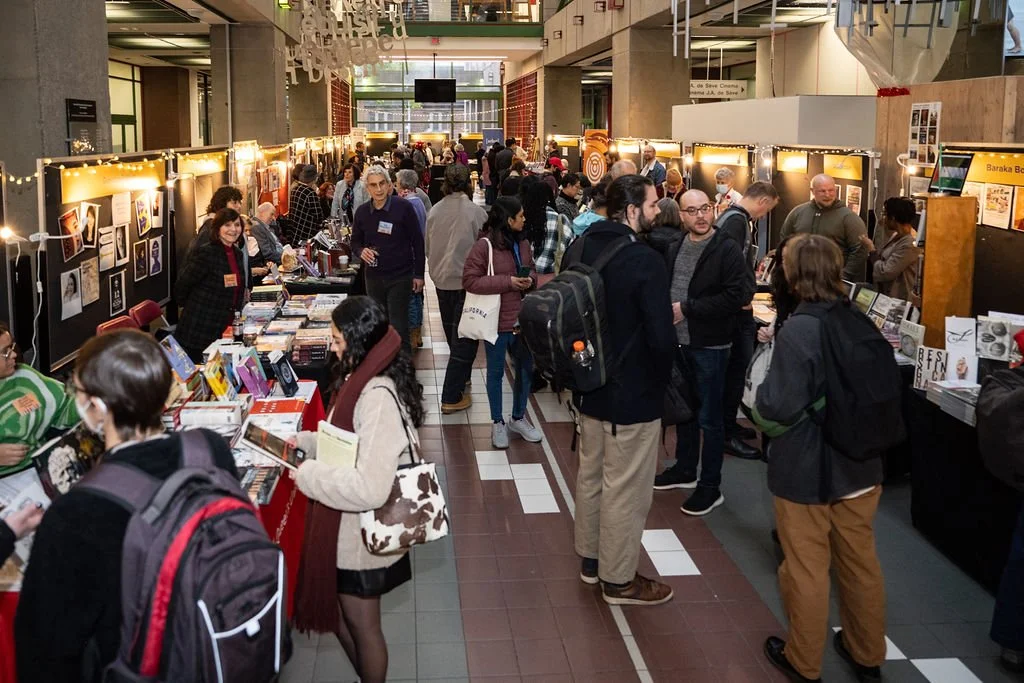A Playdate with Emilie Kneifel: Self-Isolation, Creative Self-Care & Colouring
Photo provided by PLAYD8s
When was the last time you had a playdate?
A few weeks back, Emilie Kneifel and I had a video call to talk about their project PLAYD8s, a kid-inspired, bilingual video interview series created in collaboration with Nadia Davoli all about how artists and thinkers find ways to play. So far, Emilie has hung out with eight unique guests, ranging from Ashley Obscura of Metatron Press, to her grand-maman. We ended up having a bit of a play date ourselves and talked about how colour defines certain sections of our lives, and the platonic touch of good art.
Fast forward to now: We’re all experiencing isolation and practicing social and physical distancing due to COVID-19. While I was transcribing my conversation with Emilie, I thought it was a bit surreal that we had spoken so extensively about how to be okay with being alone, and how we can do so restfully.
I hope our conversation brings you the same comfort it brought me. It made me feel like I was a kid again.
Photo provided by PLAYD8s
Malaika Astorga for Also Cool: How did the idea for the show first come about? At what point in your isolation did you decide to make a project about it?
Emilie Kneifel for PLAYD8s: I first started getting sick in 2017. When you’re isolated when you choose not to be, everything becomes magnified and you become really aware of other people’s presence. I got really into reading interviews and profiles with artists. It was a way for me to be with people without being drained energetically. I started daydreaming about this universe where I could listen to people talking about themselves.
I was thinking about how we spent time together as kids, and how precious playtime was. Not only in that it was fun, but also because I think that when you’re a kid, you’re aware of things ending in a certain kind of way. Someone’s always there to tell you that it’s time to go to school, or that it’s bedtime. Whereas when we’re adolescents, there’s this feeling of invincibility that I didn’t have anymore, and that changed my perspective.
Also Cool: It seems like you became aware of how you were coping with isolation, and what that had transformed into. When did that shift happen? Was it conscious, or did you just let yourself exist and this show is what came from it?
Emilie: I think that I’m constantly existing on multiple levels of observation. I’m very aware of myself all the time, always helicopter-mom-ing myself, asking: “How am I reacting to this?” But also, you can’t understand an era, until it has become an era.
I think that even in the era of making PlayD8s, I was figuring out who and what I wanted it to be. Now I’m figuring out that we’ve made it. There’s this layered awareness of constantly observing, but being aware that there are certain things that I’m not able to know right away.
Photo provided by PLAYD8s
Also Cool: It’s hard when you’re in an era, and you know that you are… but you don’t know what it’ll look like yet.
Emilie: There’s this creature that I learned about in my last semester in university. It spends its whole life swimming up sugar gradients, and when the sugar runs out, it turns and finds more sugar. I thought, oh my gosh, that’s how I want to be!
Sometimes I ruminate… constantly trying to figure out the puzzle of what’s going on. When something becomes a paralysis, I get out of it by thinking: “Does this taste good?” (thinking about the sugar), and if it does, I keep doing what I’m doing. If it doesn’t, then I don’t do it anymore. It’s really taught me about the slow accumulation of things.
It’s allowed me to be a lot calmer about [being isolated]. If what I’m doing feels good, then I can allow myself to stay in that place. I used to be so afraid of getting stuck, and being pigeonholed, and I would be really afraid of any decision. But it was a self-fulfilling prophecy where I would just end up getting stuck because I wouldn’t end up doing anything at all. It’s been a way for me to hack my own anxiety.
AC: What are your thoughts on community? Where do you find fulfilment from community in general, and what does the word mean to you?
Emilie: In a lot of ways, PLAYD8s was an attempt at figuring out how one can be with other people who are making and doing things. I just needed to make something that felt like how I want to be with people. I think that I’m a one-on-one hanger-outer. The show allowed me to be with someone, and to ask them about their thoughts. That’s the way that I can exist most wholly, and most like myself.
You know when you go to a party with all your friends, and after you feel like you didn’t actually see anyone? I have to believe that there’s a way to feel like you’re a part of something without having to be a part of a huge group. Community can just be you and one other person, playing in your bedroom.
There’s an episode of the show where Me-Me, my character, decides to play alone for a day. It felt important to emphasize that play, and community building, doesn’t have to be with other people constantly. There are other aspects of that life that can make it whole, or complete.
AC: It’s important to ask: “Do I actually like this, or am I doing this because this is how it’s always been?”
Emilie: For sure! For example, the way that we play on the show is through colouring. I find maintaining constant eye contact really draining. Even though it's a really important part of communication, it’s just one thing that will make me fatigued really quickly.
Colouring was a way to be with the person, while also being able to have an activity. The people who were on the show felt like they were able to take their space to sit with the questions [I was asking].
AC: What’s an ideal way to interact with your community? If there was a way that community could get together, though that doesn’t really happen right now, what would that experience be like?
Emilie: That’s definitely what I was trying to do with Playd8s. I’ll explain the different elements of it that I liked about it, that I’d like to have in other parts of my life.
It’s about tempo and rhythm, and doing things at your own pace without a pressure to perform wellness. Everyone is doing what they need to do in a given moment. Like sitting down at a show, or excusing yourself to rest in the middle of something for 10 minutes; that flexibility, without being considered rude or having to explain yourself.
I’ve definitely found that, with other disabled and/or chronically ill people, to be near someone in a way that feels safe [is important]. Safety was a big part of making the show as well, as a huge environmental factor. I don’t think we have to act serious in order to be able to be taken seriously. I think if we were able to do that, we would all take a collective exhale.
AC: What’s your relationship to colour, and colouring? How do you communicate through that?
Emilie: The colouring felt like archiving the conversations. The whole point of the project was for it to be fun. One thing that my dad always said to me growing up when I was doing an activity that I was growing out of was that, “it’s supposed to be fun.” Even if we lost all the footage and sound, I wanted the playdates themselves to be a fun experience.
I feel like colours are people in my life. I just got through a really intense orange phase. That doesn’t mean I’m wearing the colour, but I’m noticing it all the time. It seems to be following me the way that the moon follows you in the car. It feels like a presence, like a friend who’s there for you. I know orange is thinking of me because I’m seeing orange.
Colour is important to me because of my chronic fatigue, I’m more sensitive to it. Lately I haven’t been able to look at red. It makes me feel like all the energy is being sucked out of my body, like Harry Potter dementors. It wasn’t always like that, red was my favourite colour for two years. I still like red, like as a friend, but right now we're taking a bit of a break.
AC: Is there anything else you’d like to mention that we haven’t covered?
Emilie: If there is an intention I could offer for the show, it would be this: I think that the show can seem just “pink and pretty,” but I want to make it clear that this is something that someone could watch [to feel less alone.]
Something I think about a lot is platonic touch, and how rarely we are touched by people who aren’t asking anything of us. I think that art can be that because it can be so generous in its ideal form, where someone can consume something and just feel held or loved. It's a very big hope, but that's what I wish for. Either on the level of the people who made the show, or the guests on the show, or even one of the people who will watch it. I hope that they will feel like they had a friend, or that they were a part of something.
Photo provided by PLAYD8s
PLAYD8s w/ u + me-me is a bilingual video interview series created by Montreal-based creatives Emilie Kneifel and Nadia Davoli. The eight-episode season is hosted by Me-Me (played by Emilie Kneifel) who interviews artists, thinkers, and her grand-maman about how they have played, play, and how they would like to play. Sitting on a bed full of pillows, they colour with crayons and explore play in a particular theme: sound, language, aesthetics, solitude, religion, science, imagination, and family. Each episode lasts about 45 minutes.
Instagram I Facebook I Twitter

